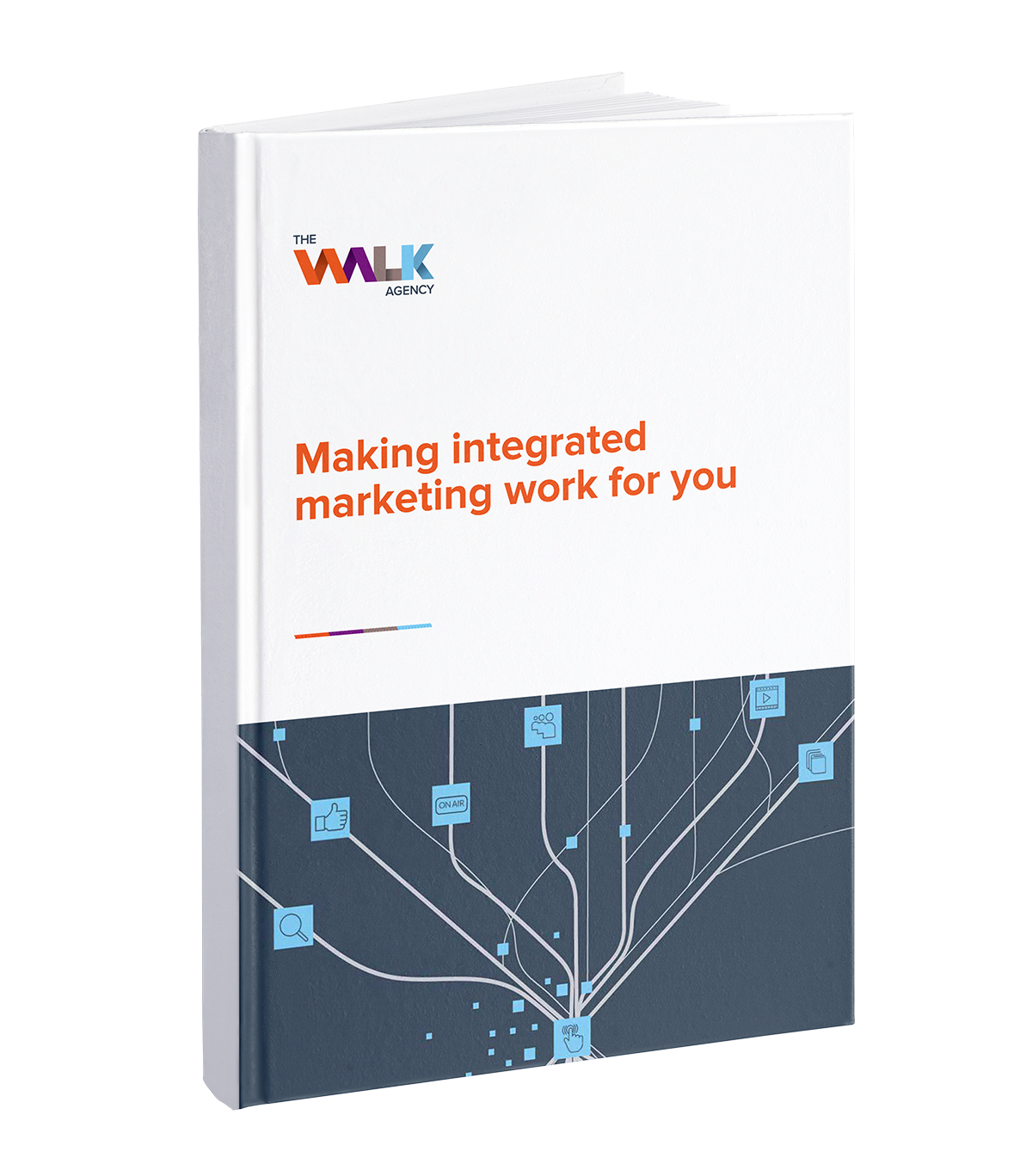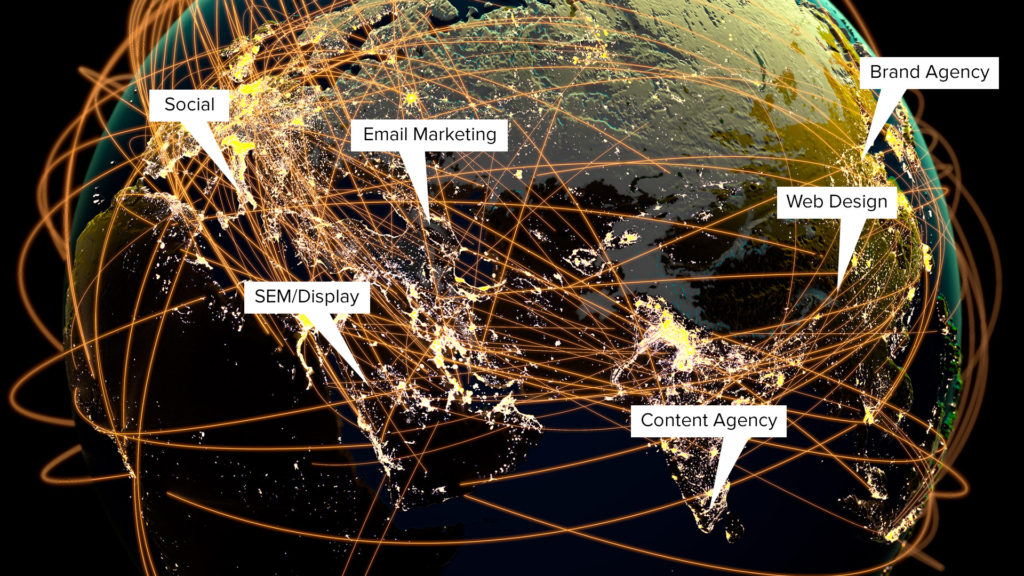So, you’ve heard about content amplification, but seriously, what does that mean? Simply put, content amplification is an integrated approach to using paid, owned and earned media to distribute content you’ve created.
You can think of content amplification like having a microphone when you’re talking to a crowd. Turn the mic off and only the people at the front will hear you. But turn it on, and your message is sent booming out to your audience. Add a few speakers to the live event, get it on radio, make it a podcast and even more people will hear what you have to say. This is content amplification.
Why does your brand need a content amplification strategy?
You put your brains and budgets behind content that will resonate with your audience. So, there’s nothing worse than investing all that time and effort in content that your intended audience will never see.
That’s why content amplification is simply good marketing. Organic reach can only take us so far, and when you’ve reached that limit, your content stops delivering value unless you push it out beyond the organic boundary.
The truth is that if you don’t invest in content amplification, you’ll also start to fall behind your competitors. Content is still a top priority in marketing, with brands becoming smarter in their planning, production and distribution. Recent research shows that content marketing is priority number 1 for marketing and agency bosses in APAC. Further to this, US marketers are increasing their content marketing budgets which is a worldwide trend. These statistics show the massive investment that brands are putting into their content whether it be video or online blogs and its distribution.
So, you’re ready to make your content work harder through amplification, but what exactly will this do for your business?
Amplification equals effective marketing
It’d be easy to think the only benefit to content amplification is an increase in audience reach. After all, the primary job of a microphone is to project sound to a broader audience. But maximising reach is just the beginning.
Content amplification is about results. One of these results is an increase in ROI for your investment in content. In an increasingly attribution-focused marketing environment, we all need to prove that our marketing initiatives are delivering value. When content is amplified intelligently through paid, owned and media channels, we can generate a massive return on investment (ROI).
Content amplification can also increase traffic to your website, grow your audience on owned channels and deliver fast results. These benefits help you develop a dedicated customer base while promoting your brand as relevant and trustworthy.
Beyond the numbers, content amplification also helps you learn. As your content finds new audiences well beyond the reach of your own channels and properties, there’s an opportunity to learn and engage with more prospective customers. You’re able to gather data, better predict behaviour, and therefore move more prospects and customers through the buyer cycle – which means more sales and more profit.
Getting started: turn it on and turn it up
If you’re thinking about content amplification, you’ll first need to develop a content strategy that documents your key objectives. Your plan should include the business objectives that will guide your content marketing efforts, clearly defined target audience(s), and the buyer cycle for your product or service. Consider mapping out your buyer cycle so that you can plan content for each stage (awareness, research, comparison, purchase, retention). Your strategy should also include already produced and published content on owned properties.
If you haven’t yet developed a complete content strategy, you may find some useful tips in our content marketing guide. If your strategy is already in place, let’s start thinking about making your content work much harder with content amplification.
Now it’s time to get loud
There is plenty to think about when planning to amplify your content, starting with clear KPIs. Clearly define what you want to achieve with each piece of content, whether it’s a certain number of people reached or a certain number of actions taken.
Next, know your audience. Where do they consume information? Where do they engage with like-minded people? These questions will help you narrow your intended audience so that your content gets in front of relevant prospects. You’ll also need to consider the buyer cycle. Before deciding where to place and promote your content, you should know at which stage of the cycle your content will best deliver value. This understanding can help inform which channel, format and style are most applicable. It’s about being media-agnostic.
Lastly, consider the value of the content itself. Ask yourself if you can create more content from what you’ve already made? Can you repurpose a video to become a podcast or blog post? Can that blog post generate tweets, which can create more avenues to our audiences? Repurposed content not only saves you time and money, but it also helps reach new prospects by delivering content through a diverse range of avenues and it can be great to achieve consistent brand message across different channels.
Distribution is key. You’ll want to be sure that your content is suited to the intended channel. This means posting your video and other visual content on channels that support visual experience for its users, or posting written content on channels that best deliver blog posts and articles.
Well, that’s a lot to think about
The options can seem overwhelming, so let’s work through the key areas (owned, earned and paid).
-
Owned media
Owned media are the channels you control, such as your website, blog, social channels and email subscriber list. You have total control over who sees the content and when. Owned media is a key component to content amplification because you don’t need to worry about budget. You own these channels and can distribute your content for free. The key is to use paid and earned media to drive audiences to your owned properties.
-
Earned media
Earned media is advertising you don’t pay for, making it highly desirable but also hard to get. The best way to think of earned media is that it’s like word of mouth, and we all know that third-party endorsement and recommendations from trusted sources can strongly influence purchase intent. Earned media could be a review, an article about your product or brand from an independent publication or even just people sharing their opinions – for example, when you’re exposed to content through social sharing on Facebook, LinkedIn or other social platforms. Sharing also occurs via instant messaging services like Web Messenger and WhatsApp, phone calls and many other offline methods, but these are very hard to track.
-
Paid media
There are so many different avenues to choose from when you distribute content, sometimes it can seem like a maze. Understanding the fundamental channels can help you choose the most efficient and relevant avenues for your business.
Paid media is one of the key areas of content distribution, and it’s as simple as its name. Paid media is advertising you pay for. It offers you the ability to be highly targeted, scale your efforts and see results quickly. This is an easy starting point for amplifying content.
Paid advertising can take many different forms, with paid social being one of the most prevalent in recent times. Each social platform offers you something distinct, and some will be more relevant to your brand than others. For example, a business that specialises in interior design might be best suited to visual channels like Pinterest, Instagram and Facebook. For a brand that sells software to businesses, content might best fit on platforms where they can reach and engage with the right audience, like LinkedIn, YouTube or even Twitter.
Paid search – in its most basic form the sponsored links that show up at the top of a search engine’s results page – is another branch of paid media that is highly targeted, flexible, and offers quick results. It is effective in driving conversions and raising awareness for businesses of all sizes, from the local mechanic to multi- national enterprises.
Retargeting is another paid media option. When we know how a user or audience has recently interacted with our owned assets, we can serve them specific ads or information. Have they searched for an SUV on a car site? If so, we can retarget them with more specific information about SUVs and not sedans.
There are also ways of using paid media that doesn’t look like an advertisement at all. Native content is paid content that looks natural in its environment. For example, you may have noticed sites that list ‘other articles you might be interested in.’ The suggested articles are likely paid media, but look like they’re part of the publication content, rather than looking like an advertisement. Another route is to enlist influencers to write about your content, sharing with their audiences and their own networks.
Video can be a hugely engaging media format, and people are consuming more video than ever before at home, at work and on the move. The increase is partly due to better internet bandwidth and data allowances, especially for mobile devices, and platforms like Facebook serving more video to their customers than other formats. Video is a great medium for repurposing content to maximise value. For example, brands spending big dollars producing TVCs can now they can make these assets work harder. Existing video can be repurposed into new formats for pre-rolls, web advertising or digital displays. These days, video can also be very smart, including dynamic elements that can be updated for their intended audience based on context, behaviour or time.
So, what next?
Clearly, when it comes to content amplification, there’s a lot to consider. Successful content amplification can help generate better ROI, reach new audiences, increase traffic and turn prospects into customers through paid, owned and earned media.
All the options and information can be overwhelming, and you might think you just don’t have the time. Luckily, you don’t have to do it alone.
The Walk Agency can help you put together and implement a content amplification process and strategy that makes your content work harder and deliver more value for your business.
Source: http://contentmarketinginstitute.com/2017/11/research-australia-content-marketers/
Source: https://www.mumbrella.asia/2017/08/apac-marketers-value-content-marketing-roi-accountability





Be the first to comment on "Turning it up to eleven: Getting results from effective content amplification"